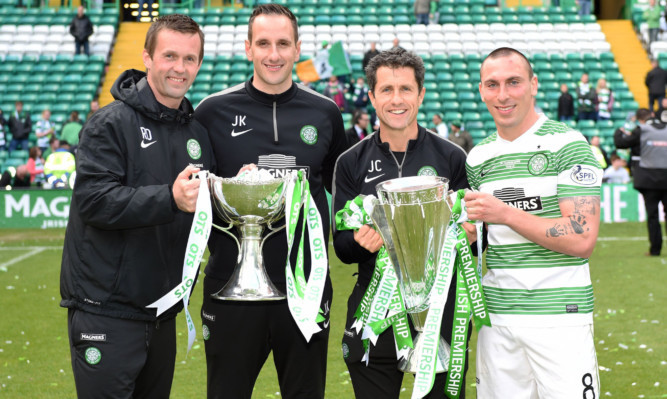
Will clubs be brave enough to take the leap?
A change, the old saying goes, is as good as a rest.
And with the latter not an option for Scottish football, the game often takes the opportunity to shake things up. Sometimes a lot, sometimes just a little bit.
This year is the 40th anniversary of the birth of the Premier Division.
The 1975 innovation came on the back of Celtic’s nine-in-a-row.
Attendances were tumbling alarmingly, with stay-away fans complaining there were far too many meaningless matches.
The switch to a 10-team top flight, with two leagues of 14 below, had the specific aim of adding interest by making things more competitive.
Gates were split between home and away teams back then, and the eight matches against Old Firm opposition each season generated much-needed revenue for provincial clubs.
It was revolutionary and it worked, with first Aberdeen and then Dundee United storming the gates.
The Dons captured the title in 1979-80, Sir Alex Ferguson masterminding a success which broke a Rangers and Celtic duopoly stretching back to Kilmarnock’s triumph in 1965.
The Tangerines, under the charge of Jim McLean and with the likes of Paul Sturrock and Dave Narey in their pomp, emulated the feat three seasons later.
They didn’t know it then, but they were to be the meat in the sandwich, with Aberdeen taking their crown in 1983-84 and impressively retaining the title the following year.
But for Albert Kidd’s dramatic intervention in 1986 celebrated or notorious depending on which camp you fall into Hearts would have had their place on the roll of honour, too.
It wasn’t to be. The Edinburgh club went to Dens Park on the back of a formidable 27-game unbeaten run, needing only to avoid defeat to clinch their first title since 1959-60.
Kidd, though, had different ideas, scoring twice in the last 10 minutes to give Dundee victory and hand the title, gift-wrapped in Dark Blue ribbons, to Celtic, who had meantime been thrashing St Mirren.
They didn’t realise it then, but it was to be a hugely pivotal moment for the game.
Since then, no team outside the Old Firm has won the title.
Aberdeen came agonisingly close in 1990-91, going down to winners Rangers at Ibrox when a draw would have been enough.
At the same time as flexing their muscles on the park, the Glasgow giants continued to be influential off it over reconstruction.
In 1998 they were an integral part of the breakaway SPL, fuelled in part by a Deloitte & Touche report pointing up the need for change.
Anyone looking in from the outside could have been forgiven for thinking nothing had changed, with the same old faces in their usual places at the top of the game.
Initial appearances, though, were deceptive.
By splitting from the Scottish Football League, the top clubs ended the ruling body’s 123-year control of professional sport in the country.
And the leading clubs’ agenda soon became evident.
One up, one down for promotion and relegation ensured all but the very weakest would retain their regular seat at the top table.
Stringent criteria demanding among other things that all top-flight clubs have 10,000 all-seater stadia made breaking into the cabal even tougher. At times, impossible.
When Motherwell finished bottom in 2002-03, they were spared relegation because Falkirk’s Brockville ground wasn’t up to the standard.
And those who did scrape enough money together faced being burdened with a white elephant for a home.
The worst example was Airdrie, whose re-built New Broomfield ground was far too big for the club’s needs.
It made no sense and couldn’t last. So it was that in 2004 the minimum number of seats was slashed to 6,000 to more realistically reflect spectator demand.
The publication of Henry McLeish’s report on Scottish football in 2010 pointed the way towards the radical change that was to come.
The former First Minister was critical of the way the game was set up, and called for the Scottish Football League and the Scottish Premier League to join forces and work together for the good of the game.
It was put before the clubs, who voted it through, and in June, 2013, the Scottish Professional Football League, a merger of the SPL and the SFL, was formed.
As big a change as that was, it was never going to be the last.
News of the monster £5 billion Sky television deal for England has only sharpened the desire of clubs north of the Border to present the product here in a way that is as innovative and attractive as possible, to fans, sponsors and the TV companies.
The new talks on league reconstruction we reveal today now have the chance to deliver change, not just for change’s sake but to give fans a real break away from a tired old format.
And that would have to be applauded.

Enjoy the convenience of having The Sunday Post delivered as a digital ePaper straight to your smartphone, tablet or computer.
Subscribe for only £5.49 a month and enjoy all the benefits of the printed paper as a digital replica.
Subscribe